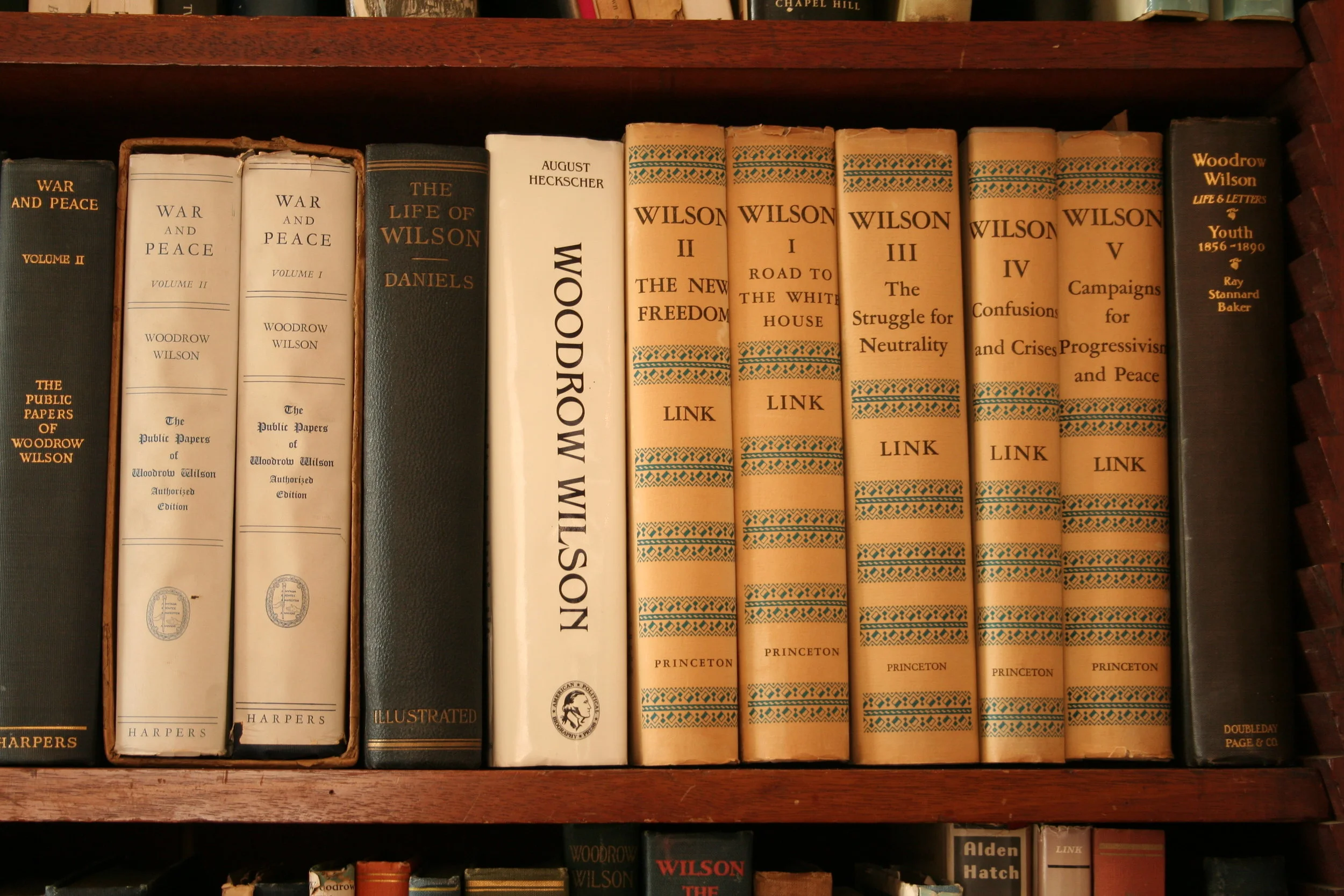Artists in the Foxhole – Trench Art at WWPL
/In early December of 1918, President Woodrow Wilson set sail on the USS George Washington on a nine-day voyage across the Atlantic. Becoming the first United States president to visit Europe while in office, President Wilson would spend the vast majority of his time in France, attending the conference negotiating the peace treaties to end the Great War (WWI). President Wilson would spend Christmas day of 1918 with his fellow countrymen touring divisions of American soldiers stationed in France. It was on this holiday in 1918 that American soldiers stationed in France gave their Commander-and-Chief a gift of appreciation and respect. The gift, which is now housed in the WWPL’s collection, was a spiral carved cane with bullet casings inserted around the handle and along the arc. At the base of the handle is the engraved name of Woodrow Wilson.
Letter opener made with bullets, donated by R. Reed Whitaker in 2013.
The cane presented to Woodrow Wilson is a prime example of trench art created by many soldiers throughout the First World War. The term “trench art” is in reference to decorative war souvenirs created from recycled wartime materials. Bullets, artillery shells and piece of shrapnel were among the most commonly used mediums for creative expression.
After the initial assault into France and Belgium by the Germans in 1914, much of the Great War was spent in gridlock with soldiers dug deep in trenches across France. The “hurry up and wait” nature of the conflict created a need for soldiers to remain occupied during lulls in battle. The psychological toll on men in the days, weeks, and sometimes months waiting for fighting to resume could potentially do more harm long term to the unit then the fighting itself. To prevent these minds from breaking under the strains and stresses of war, it was common for soldiers to encourage one another to keep the mind sharp through creative artistic expression. Whether simply carving one’s identification and location into a used artillery shell or constructing a letter opener with used bullet casing and a dull knife, the presence of this art indicates the need to remain psychologically attentive a midst horror never before experienced by mankind. A notable example held by the WWPL is the mess kit of Sgt. Charles A. Sloan of Odin, Illinois. A member of the 326 th Field Artillery in the 84 th Division (also known as the Railsplitters), he played the trombone in the unit band. His mess kit became his canvas as he etched personal information and details of his deployment in elaborate calligraphy. This item was not only a tool to keep boredom at bay, but also a record of his service.
*The .75mm brass shell casing was donated by Kin Hipkins in 2011.
The increased interest in trench art in recent years has revived study of the World War I era. The buying and selling of trench art throughout the United State and Europe has erupted into a million dollar industry with carved bullets going for anywhere between $60 to $100 dollars each in a recent Bonham’s auction in London. The vast majority of items sold however are handled through online auction websites which has led to a creation of replica pieces diluting trust in the industry.
The mess kit pictured above was etched by Sergeant Charles A. Sloan of Odin, Illinois. He joined in 1917 as part of the 326th Field Artillery, 84th Division and ws a band sergeant and played trombone. His Diary talks about playing around 13 funerals a day, and how boring the trenches are.
The images words etched on the mess kit are:
“Charles A. Sloan” (written in both print and a signature and with a nickname of Chas)
“326 FA Band”
“Odin Illinois”
“In France”
“Sept. 30-18”









